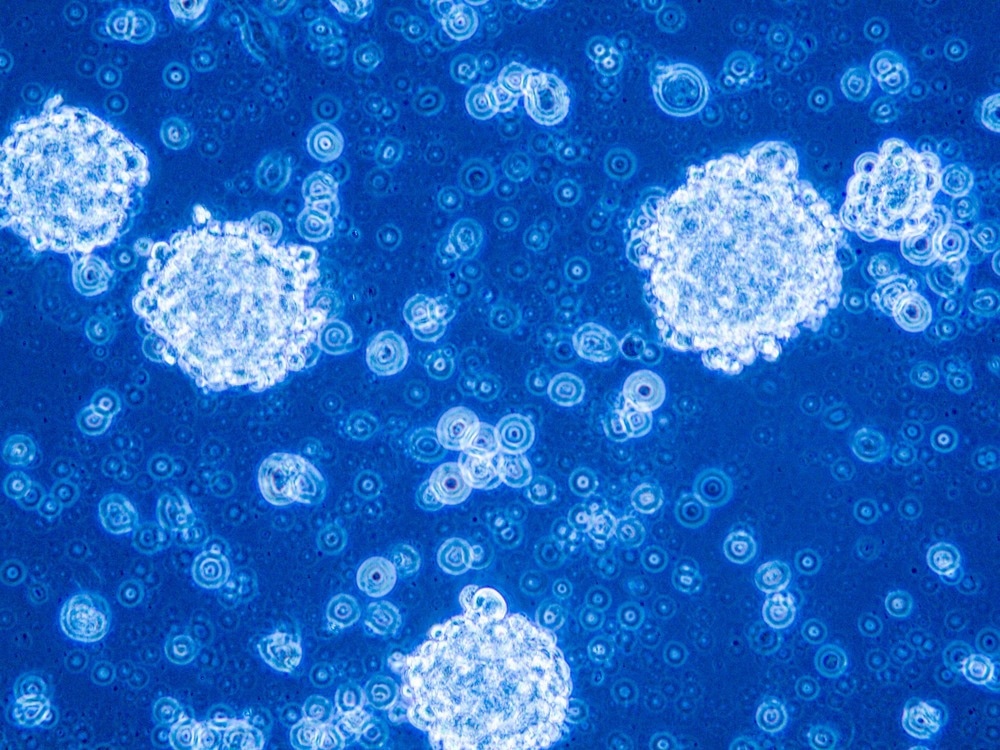Reviewed by Danielle Ellis, B.Sc.Nov 1 2023
A groundbreaking research conducted at Umeå University in Sweden has revealed that the three-dimensional arrangement of DNA can impact the development of aggressive brain cancer, glioblastoma.
 Silvia Remeseiro. Image Credit: Mattias Pettersson
Silvia Remeseiro. Image Credit: Mattias Pettersson
By pinpointing the elements that glioblastoma exploits to react to neurons and facilitate its growth and dissemination, this finding sets the stage for future investigations into novel brain tumor treatments.
We have now identified the most important factors behind how the tumor responds to nerve cells, thus becoming more dangerous. These findings offer hope in our long-term battle against this difficult-to-treat cancer, for which the prognosis has not improved in decades.”
Silvia Remeseiro, Study Lead Author and Assistant Professor, Umeå University
Glioblastoma stands as the deadliest form of brain tumor in adults, and presently, there exists no definitive cure.
Patients diagnosed with glioblastoma typically confront a life expectancy of approximately one year following diagnosis.
Despite adhering to the existing treatment protocols, which encompass surgical intervention, radiotherapy, and chemotherapy, a mere four percent of patients manage to survive five years beyond their initial diagnosis.
One promising avenue for comprehending and addressing this type of cancer revolves around the study of DNA. It is already established that alterations, or mutations, in non-coding regions of DNA can heighten the cancer risk and influence the functioning of genes.
This phenomenon arises from the presence of enhancers within DNA, often referred to as “switches,” which play a pivotal role in ensuring that the correct genes are activated in the appropriate cells at the precise time.

Image Credit: Anna Durinikova/Shutterstock.com
The precise regulation of genes is of paramount importance. Any deviations or abnormalities in these "switches" and their interactions with genes can give rise to changes in gene expression, ultimately contributing to the development of cancer.
A significant leap forward occurred when researchers unveiled the synaptic connections between nerve cells and brain tumors. Nerve cells can transmit electrical signals to brain tumor cells, promoting the tumor's growth and dissemination.
The recent study conducted by Umeå researchers underscores the significance of alterations in DNA structure and enhancers, which, in turn, impact gene expression, in facilitating communication between neurons and tumor cells.
It provides valuable insights into how glioblastoma cells become more aggressive in response to signals from nerve cells.
Employing cells derived from glioblastoma patients and employing advanced methods to examine DNA structure and epigenetic modifications, the scientists pinpointed the pivotal components at the heart of the communication between neurons and tumors, denoted as SMAD3 and PITX1.
These two proteins actively interact with and govern the DNA switches responsible for governing gene expression. Through experiments conducted on both cell cultures and mice, it became evident that inhibiting SMAD3, in conjunction with the signals from nerve cells, amplifies the tumor’s capacity to proliferate and disseminate.
We are optimistic that our discovery can guide efforts to attack glioblastoma by controlling how nerve cells and brain tumors interact. This would enable the development of new treatment strategies targeting this critical communication, which could hopefully improve the prognosis of glioblastoma patients.”
Silvia Remeseiro, Study Lead Author and Assistant Professor, Umeå University
Source:
Journal reference:
Chakraborty, C., et al. (2023) Rewiring of the promoter-enhancer interactome and regulatory landscape in glioblastoma orchestrates gene expression underlying neurogliomal synaptic communication. Nature Communications. doi.org/10.1038/s41467-023-41919-x.